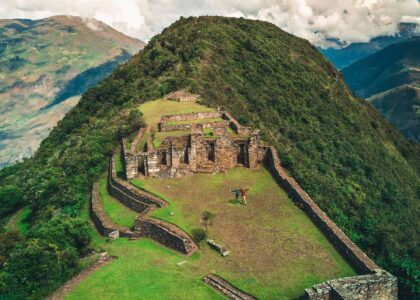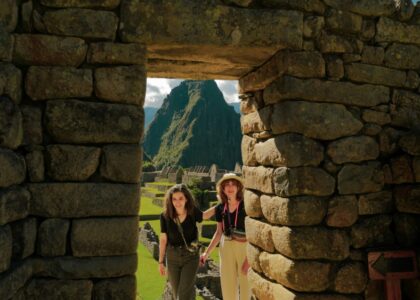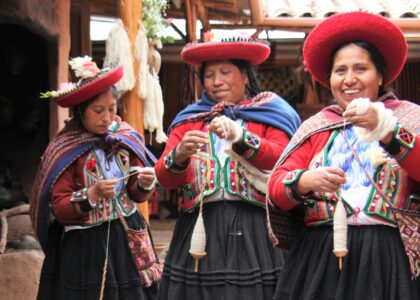South America, a land of diverse landscapes and cultures, beckons backpackers seeking adventure beyond the ordinary. From the misty peaks of the Andes to the vibrant rhythms of city life, this continent offers a tapestry of experiences. Each step is a story, each destination a new chapter in the book of adventure. As we explore this vibrant land, we’ll uncover lesser-known facets of backpacking in South America. Join us as we explore the unexpected and educational aspects of journeying through South America.
Traveling in South America brings a unique array of transportation options. You might find yourself on a ‘chicken bus,’ a colorful and lively local bus packed with both people and sometimes even farm animals, offering an authentic experience. Then there are collectivos and shared taxis that are both affordable and efficient for shorter trips. These modes of transport not only connect you to different places but also immerse you in the everyday life of locals, making each journey an adventure in itself.
In South America, road safety standards can be quite different from what many travelers are used to. You may encounter roads without clear signs or markings, and local drivers often have their own set of unwritten rules. Seat belts, especially in the back seats of taxis, might be missing or non-functional. Buses and vans often travel at high speeds, taking sharp turns close to the edges of mountain roads. Awareness of these differences is key to preparing for road travel in South America, ensuring safety and readiness for the unexpected.
When traveling in South America, you might encounter the ‘Gringo Tax’ in taxis. This is an informal term for the higher prices sometimes charged to tourists. To navigate this, first, research typical taxi fares in the area you’re visiting. Then, always agree on a price before starting your journey or ensure the meter is used. Don’t hesitate to negotiate or seek another taxi if a fare seems too high. Being informed and prepared helps you pay a fair price and enjoy your travel experience without overpaying.
South America’s music scene is vibrant and diverse, with reggaeton being a major hit. Radios often play a mix of music styles, with reggaeton’s catchy rhythms standing out. In this region, music is more than just sound; it’s a part of daily life, reflecting the continent’s cultural richness. You’ll find music pulsing in the streets, with local hits and international tunes blending seamlessly, offering a true taste of South American pop culture.
South American cuisine is a delightful surprise, stretching far beyond common dishes. Street food stalls and local markets offer an array of flavors, from sizzling meats to fresh, vibrant produce. Each country has its unique specialties, blending indigenous traditions with colonial influences. Exploring the local food scene isn’t just about tasting; it’s an educational journey through the continent’s diverse culinary landscape, revealing the history and culture behind each delicious bite.
There’s a common misunderstanding that Mexican traditions heavily influence South American culture. However, South America, with its diverse countries, has a unique cultural identity that is distinct from Mexico’s. While both regions share Latin roots, their food, music, and customs differ significantly. It’s important to recognize and respect these differences, appreciating each region’s individual heritage and contributions to the rich tapestry of global cultures.
Traveling in South America, it’s useful to know that restroom facilities can vary. Often, you might not find toilet paper, or you may need to pay a small fee to use the facilities. It’s a good idea to carry your own toilet paper and some change. Also, in many places, it’s customary to dispose of used toilet paper in a bin rather than flushing it to avoid plumbing issues.
As a foreign traveler in South America, often referred to as a ‘gringo’, you might stand out. This can lead to a mix of experiences, from curiosity and friendly interactions to occasional overcharging. Embracing the gringo role can be an enlightening way to connect with locals, understand their perspectives, and share your own. It’s all part of the adventure of immersing yourself in new cultures and environments.
In South America, travelers often speak of the incredible kindness and hospitality they encounter. From cities to remote villages, the warmth of the people stands out. Many locals are eager to help, share stories, or offer directions. This friendliness makes traveling here an adventure and a heartwarming experience.
Marketplaces in South America are hubs of energy and color. They’re places where locals gather and sell fresh produce, handcrafted goods, and street food. Each market reflects the culture and traditions of its area, making them must-visit spots for a true taste of local life.
South American cuisine often has a sweet side. From sugary pastries to sweetened drinks like Inca Cola, a love for sugar is apparent. These treats are a part of the culinary experience, reflecting the region’s tastes and traditions.
Milk in South America might surprise you. Often found shelf-stable, it’s different from the refrigerated milk common in other places. While suitable for cooking or cereal, its unique taste and texture might be unexpected for those used to cold, fresh milk.
In South America, ‘Almuerzo’ is a popular lunch choice known for being affordable. It typically includes a set menu with several courses like soup, a main dish, and sometimes a drink or dessert. It’s a great way to enjoy a full meal without spending too much. Almuerzo offers a chance to taste local dishes and is a favorite among both locals and travelers.
In South America, it’s crucial to be cautious with water. Not all tap water is safe to drink, so buying bottled water or using a water purifier is advisable. When eating fresh fruits and vegetables, ensure they’re washed in safe water. Staying hydrated is important, but doing it safely is key.
Managing money wisely while traveling in South America involves a few key strategies. Use local currency for better rates, learn to haggle in markets, and be aware of the ‘Gringo Tax .’For tours and activities, compare prices and quality. Also, carrying some cash for small expenses is always a good idea.
Backpacking in South America is an adventure filled with unique experiences, from the vibrancy of local markets to the rhythms of reggaeton and the tastes of diverse cuisines. Alongside these, be prepared for different transportation styles, road safety norms, and the warm hospitality of the people. While challenges like navigating taxi fares or adjusting to local food habits may arise, they add to the educational journey. Embrace these experiences with an open mind and a spirit of discovery, and you’ll find South America’s backpacking adventure both enriching and unforgettable.
Are you ready to explore everything that South America has to offer? Contact Explorify today and get ready for the backpacking trip of a lifetime!






